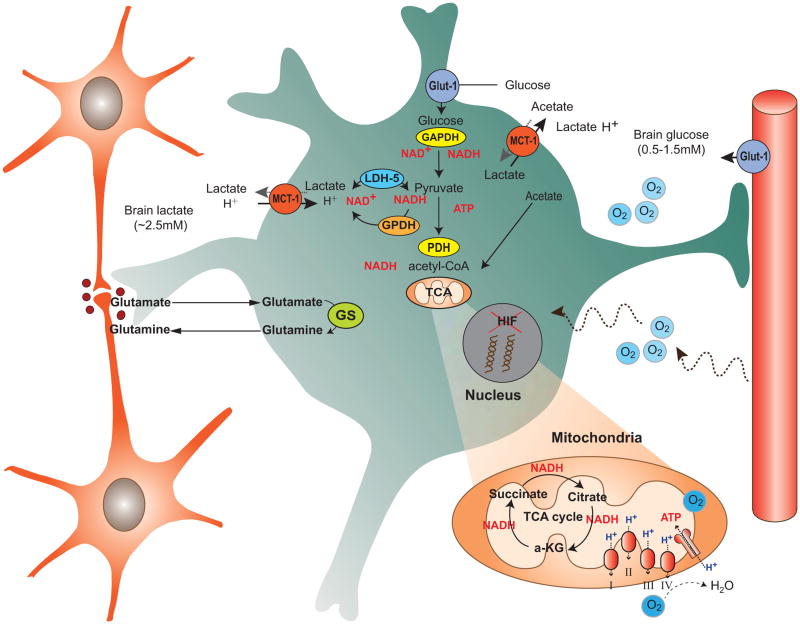Fig. 1.
This diagram shows the important metabolic interactions between the cellular elements of the brain: two neurons are shown on the left (orange), whereas the primary roles of astrocytes (green) are illustrated in terms of metabolic processing (center), as an interface to blood vessels and blood brain barrier (right). Neurons are shown to release glutamate, which is then transported into astrocytes, converted to glu-tamine and exported back for neuronal packaging back into glutamate (using glutamine synthetase, GS). Metabolites present in the extracellular space are shown (glucose: 0.5-1.5 mM concentration; brain lactate ∼ 2.5 mM; systemic lactate ∼ 0.75 mM) as well as transporters (glucose GLUT1 on endothelium and astrocytes, monocarboxylate transporter (MCT1) on endothelium and astrocytes). Astrocytes are net exporters of lactate, derived from glycolysis, maintaining a high extracellular level of lactate for neuronal uptake and metabolism. Oxygen is readily available in the extracellular space for both neuronal and astrocytic oxidative metabolism, even though considerable astrocytic ATP is derived from glycolysis.

